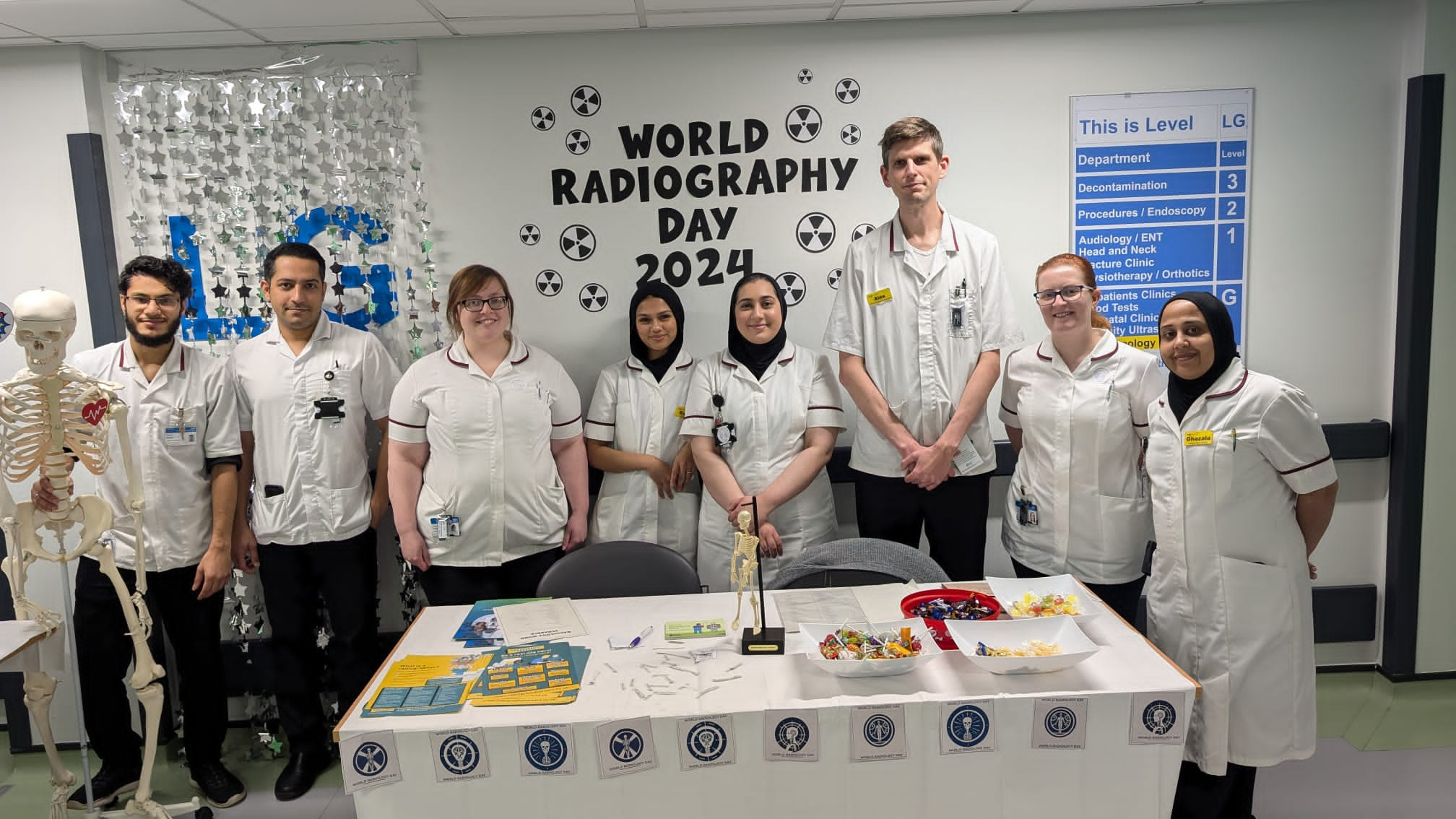
Picture: Birmingham Heartlands Hospital celebrations in 2024
World Radiography Day 2025 is taking place on Saturday 8 November, with radiographers around the globe marking the celebration in their own unique ways.
The awareness day, which takes place on the same date each year to coincide with the anniversary of the discovery of X-ray technology by Wilhelm Röngten in 1895, is organised and promoted by the Society of Radiographers.
Sponsored by Elekta this year, World Radiography Day (WRD) aims to inspire radiographers and promote the profession to the wider world.
Radiographers have been busy sharing their ideas on social media, using the hashtag #WRD2025.
We want to hear from SoR members about how you have been celebrating this year.
Have you put up posters in your department to share the word? Have you and your colleagues held a special event to mark the occasion? Or maybe you have baked a special WRD cake, or perhaps some other stand-out way of celebrating?
If you would like to share your celebrations, with a chance to appear in an upcoming edition of Synergy, please send through details and a picture to [email protected].
The Society of Radiographers has marked the occasion in various ways, including sending WRD packs to radiography departments ahead of the day.
About World Radiography Day
Along with Fleming’s discovery of penicillin and Banting and Best’s first successful use of insulin, Wilhelm Röntgen's chance finding on 8 November 1895 that invisible rays from a cathode ray tube could pass through objects and cause a specially-treated screen nine feet away to glow has changed the course of medicine.
Röntgen called these emissions X-rays on a whim to reflect their mysterious and unknown nature. He intended the name to be temporary but, as we all know, it stuck and attempts to later call them Röntgen rays were unsuccessful.
He continued to experiment and noted that the rays appeared to pass through human soft tissue but not bone. To test this finding, he took an X-ray picture of his wife Bertha’s hand. After observing the results, she is said to have remarked: “I have seen my death!"
X-rays and the subsequent rapid and continuing advances in medical imaging technology have changed the way medicine is practised and have led to innumerable new diagnostic techniques and treatments. Without them, clinicians would be grasping in the dark.
So, more than 100 years after William Röntgen made his discovery, we celebrate the wonderful force for good that it has become and the inspiring work of radiographers across the globe.
